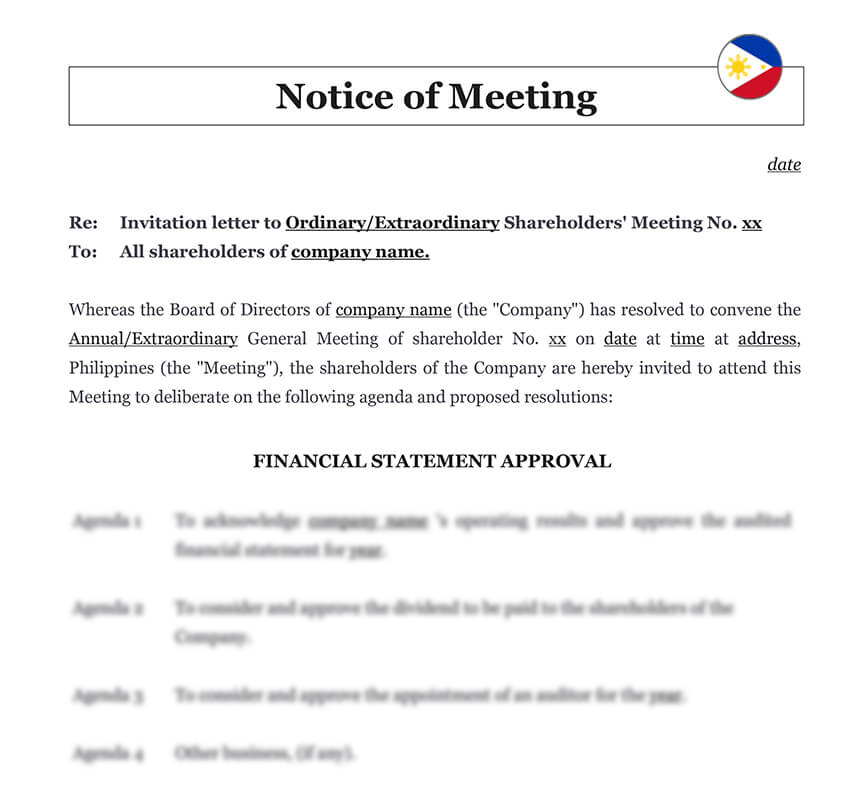Ready to use legal template
Drafted by experienced lawyers
Compliant with Filipino law
Ready to use legal template
Drafted by lawyers
Compliant with Filipino law
Home › Business contracts › Notice of meeting
Learn more about Notice of Meeting in Philippines
Before an ordinary or extraordinary meeting, use this notice to inform the shareholders and directors of the date, time and place of the meeting, as well as the general nature of the business to be transacted. A company’s general meeting must comply with the requirements set out in the Companies Act and other Philippine regulations. Failure to do so may result in serious consequences. The notice of the meeting can be sent to the partners by registered mail with return receipt 21 days or 14 days before the meeting. To start preparing your general meeting, you can obtain a model notice in word format from Themis Partner. You can also download the Minutes of Meeting to summarize all decisions that have been taken.
Table of contents
-
When should a Notice of Meeting be sent?
-
Who should receive the Notice of Meeting?
-
What is included in the Notice of Meeting Letter?
-
What types of meetings require notice?
-
What are the notice requirements for board meetings?
-
What is an annual general meeting?
-
What is an extraordinary general meeting?
When should a Notice of Meeting be sent?
All shareholders must be given a clear 21-day written or electronic notice. In the case of a section 8 corporation, 14 days’ clear notice is required instead of 21 days. ‘Clear days’ are days other than the day of the meeting and the day of the notice of service. 2. If a general meeting notification is given by mail, it is deemed to be served 48 hours after the letter containing it is mailed. Each of the 21 days must be filled or completed. The day on which the member is deemed to have received the notice, as well as the day of the general meeting, must be added to the 21-day timeframe.
Who should receive the Notice of Meeting
Notify:
| ➤ All members, the legal representative of any deceased member, or the assignee of an insolvent member |
| ➤ Auditors |
| ➤ Directors |
| ➤ Secretarial auditor |
| ➤ Debenture trustee, if any |
| ➤ Other individuals who are entitled to it |




